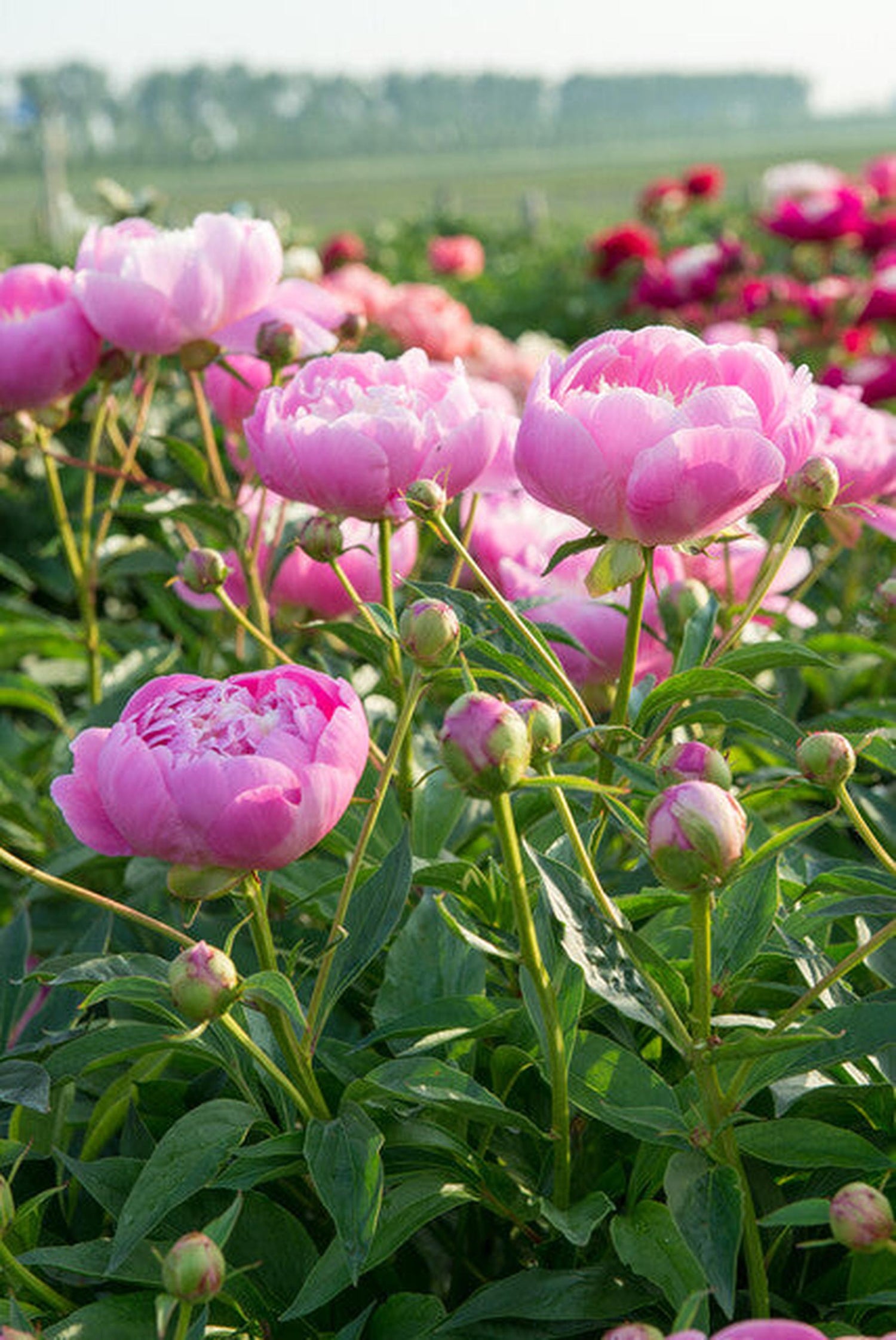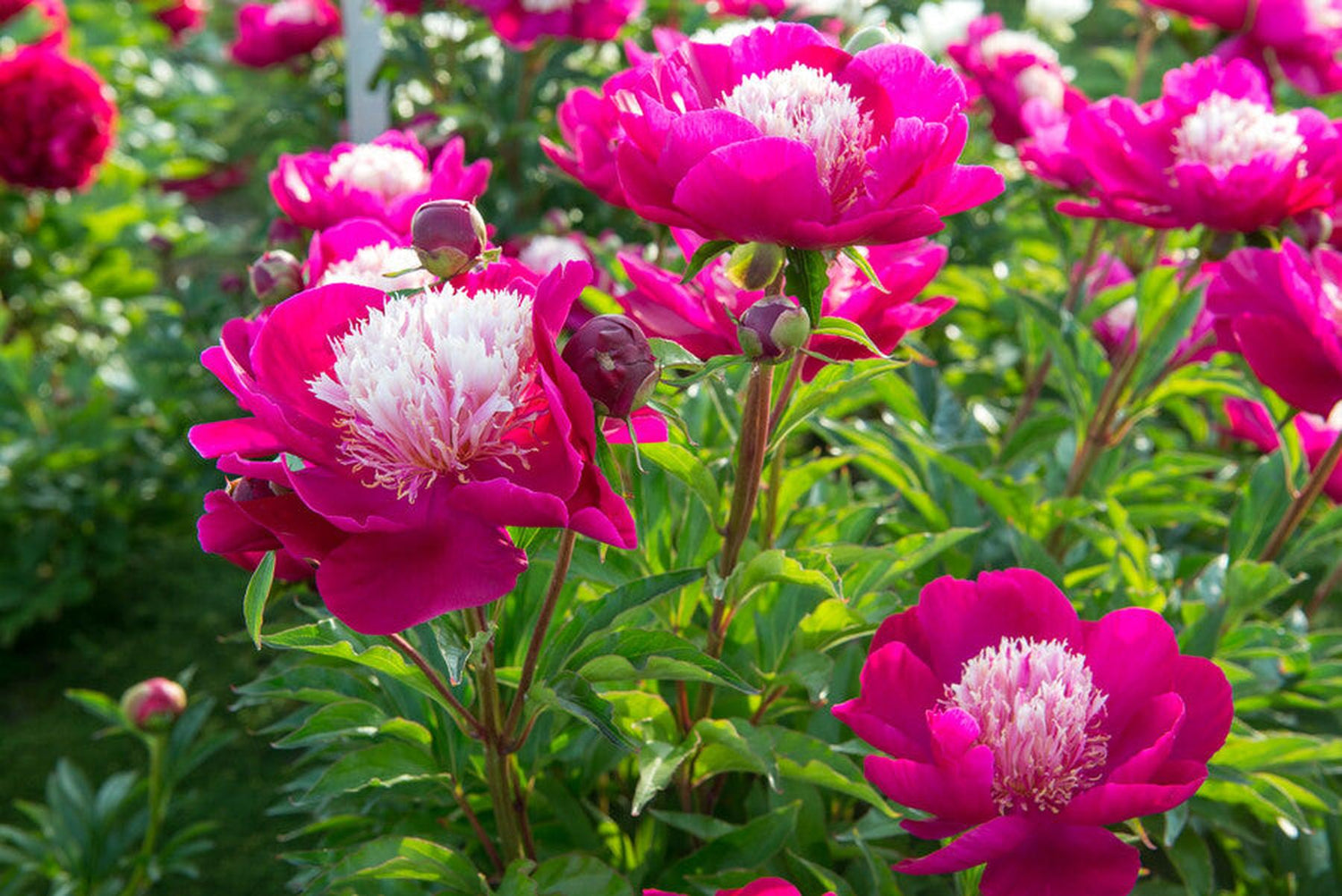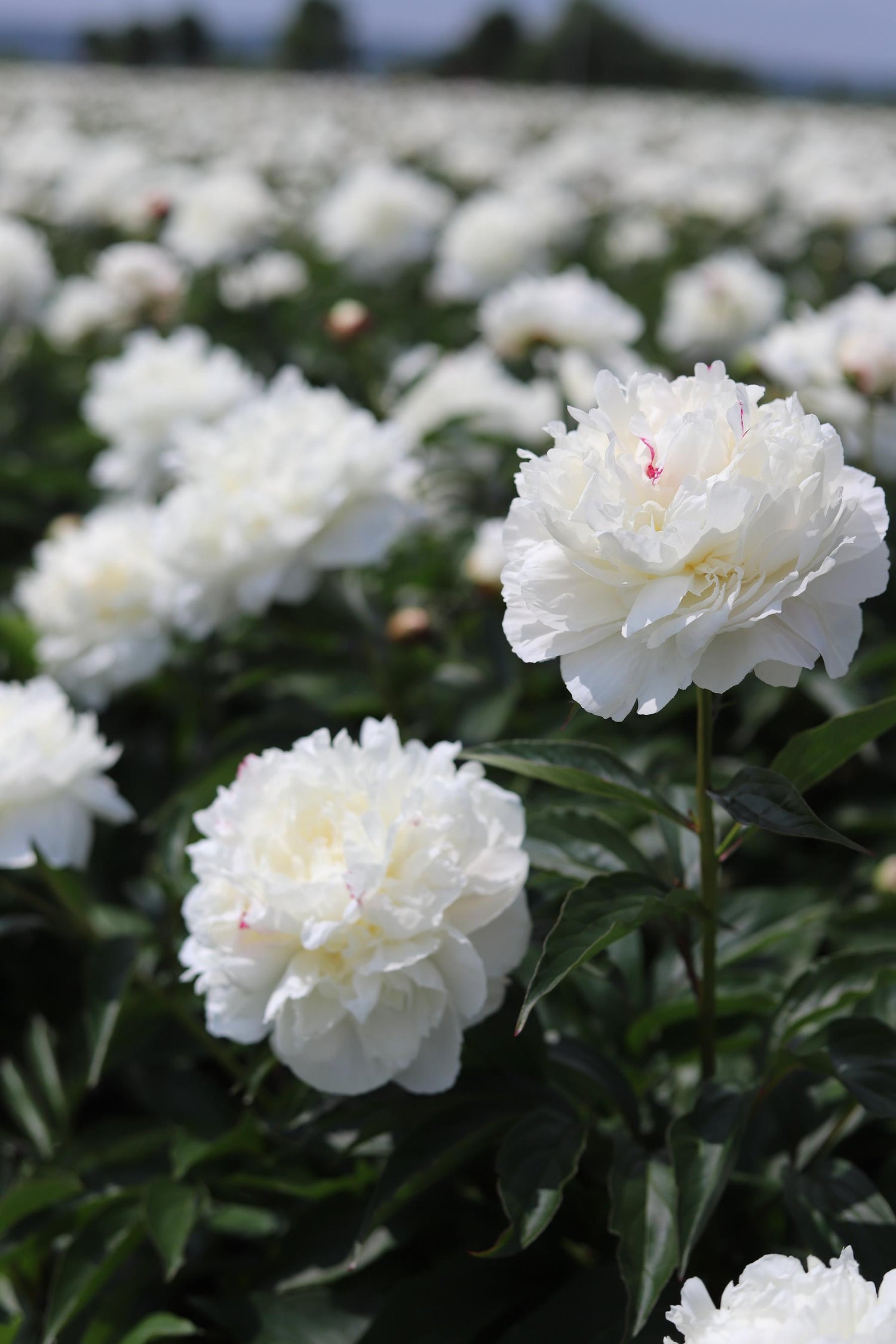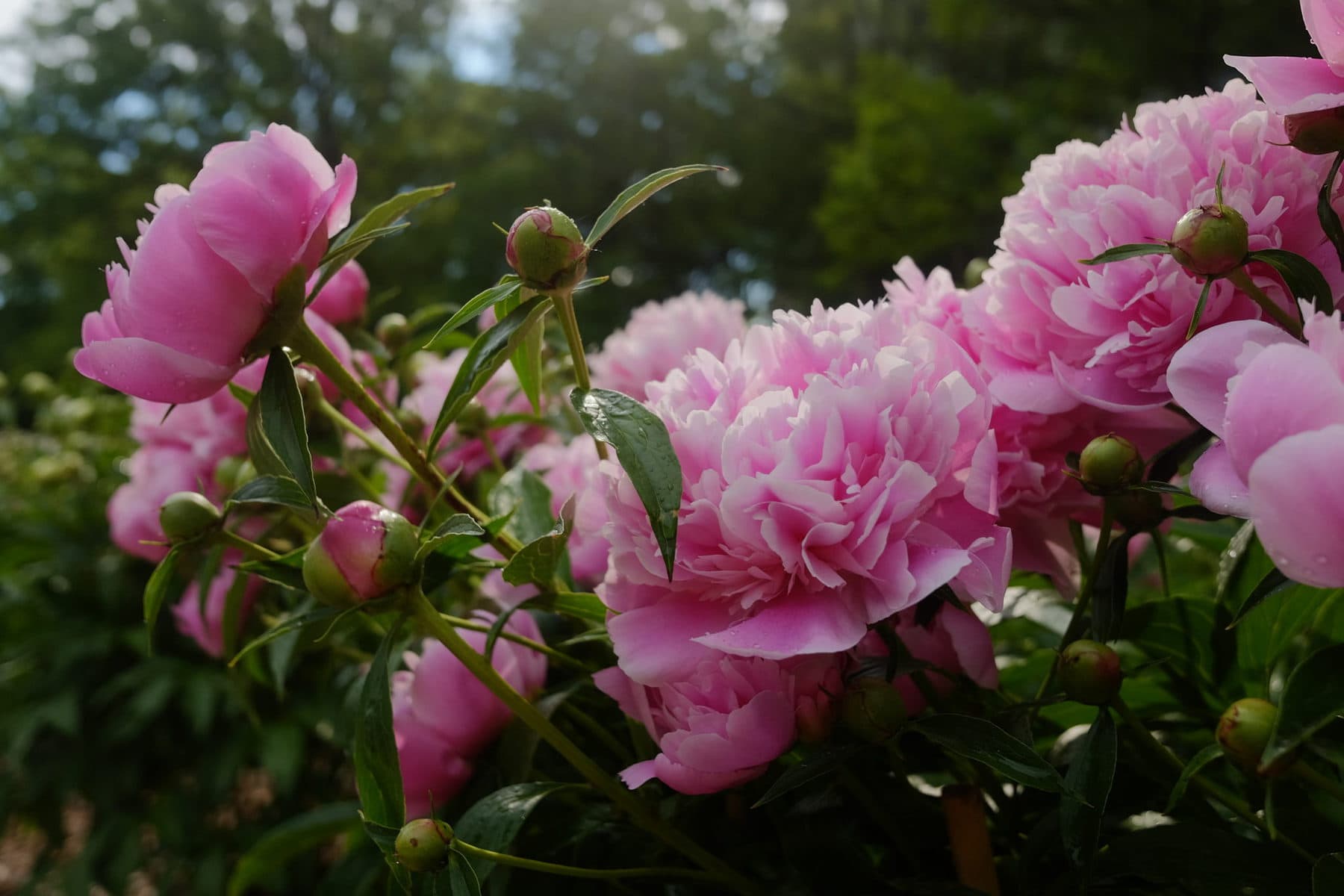Planting and Care
Caring for peonies
Proper care ensures your peonies stay healthy and vibrant:
- Water peonies regularly, keeping the soil moist but not waterlogged. Deep watering once a week is usually sufficient.
- Apply a layer of mulch around the base of the plants to retain moisture and suppress weeds.
- Feed peonies with a balanced, slow-release fertilizer in early spring when new growth appears. Avoid high-nitrogen fertilizers.
- Remove spent flowers to encourage more blooms and prevent seed formation. In late fall, cut back herbaceous peonies to the ground to prevent disease. For tree peonies, remove any dead or damaged wood.
- Provide support for taller varieties to prevent stems from bending under the weight of the flowers.
Important tips to remember when planting peonies
Keep these key points in mind for successful peony planting:
- Avoid Overcrowding: Space plants 90-120 centimeters apart to ensure good air circulation and room for growth.
- Proper Depth: Planting peonies too deep can result in poor blooming. Ensure the eyes are just below the soil surface.
- Patience is Key: Peonies may take a couple of years to establish and bloom prolifically. Be patient and provide consistent care.
- Disease Prevention: Good air circulation and proper spacing help prevent fungal diseases. Regularly inspect plants for any signs of pests or disease.





